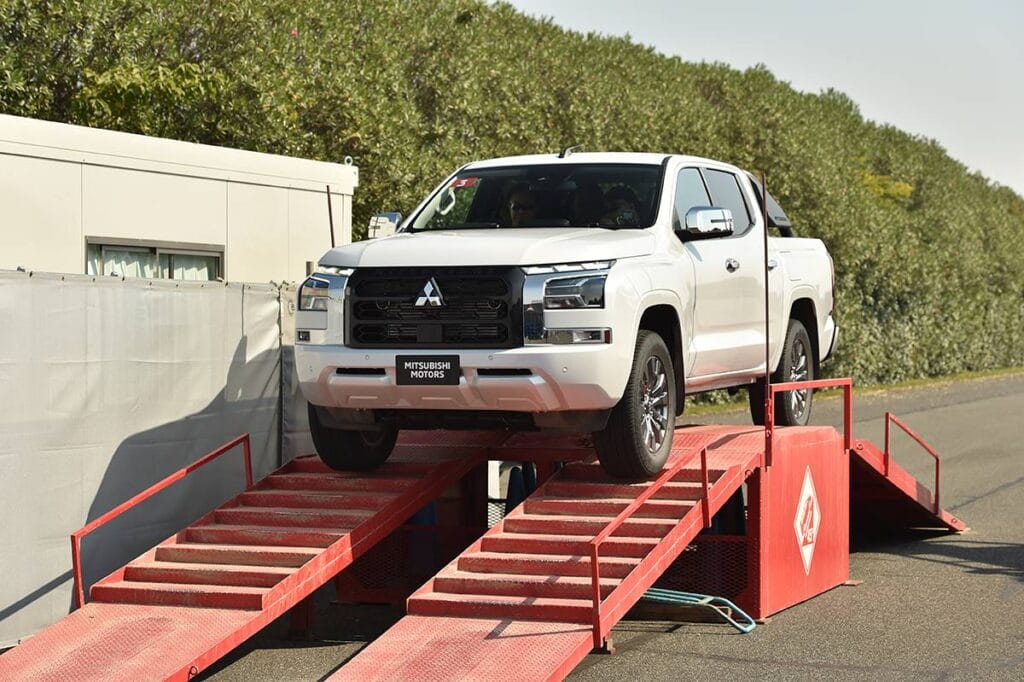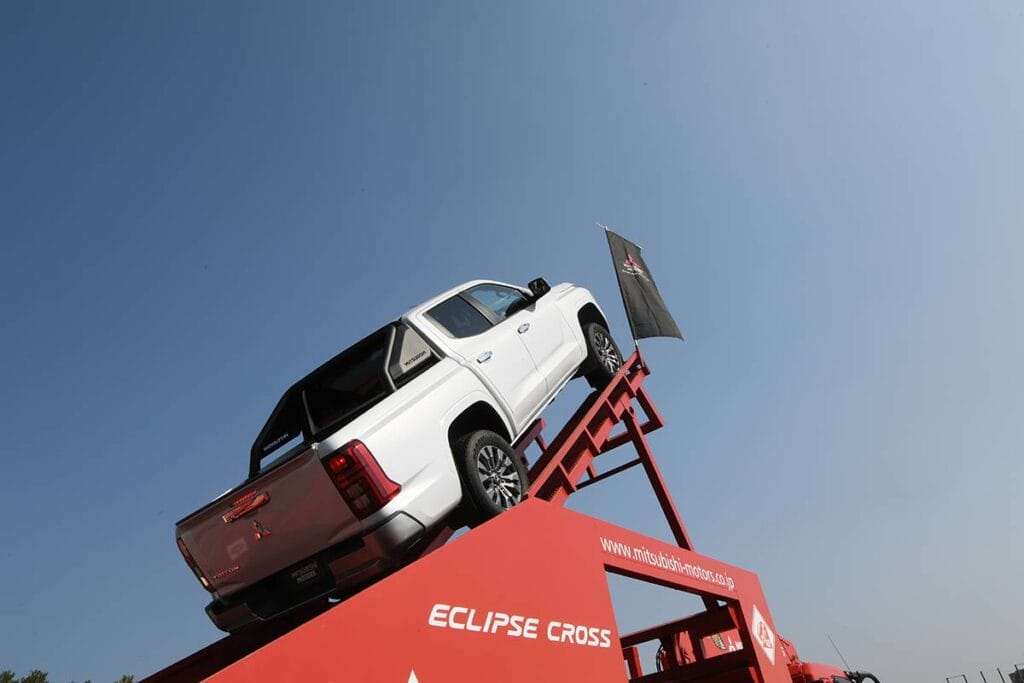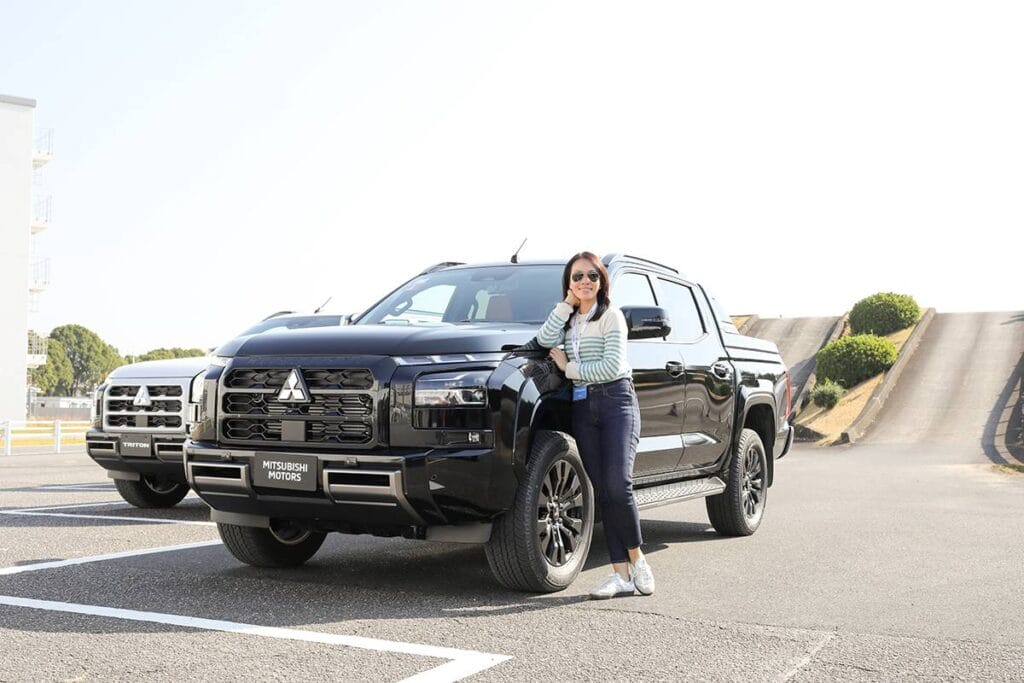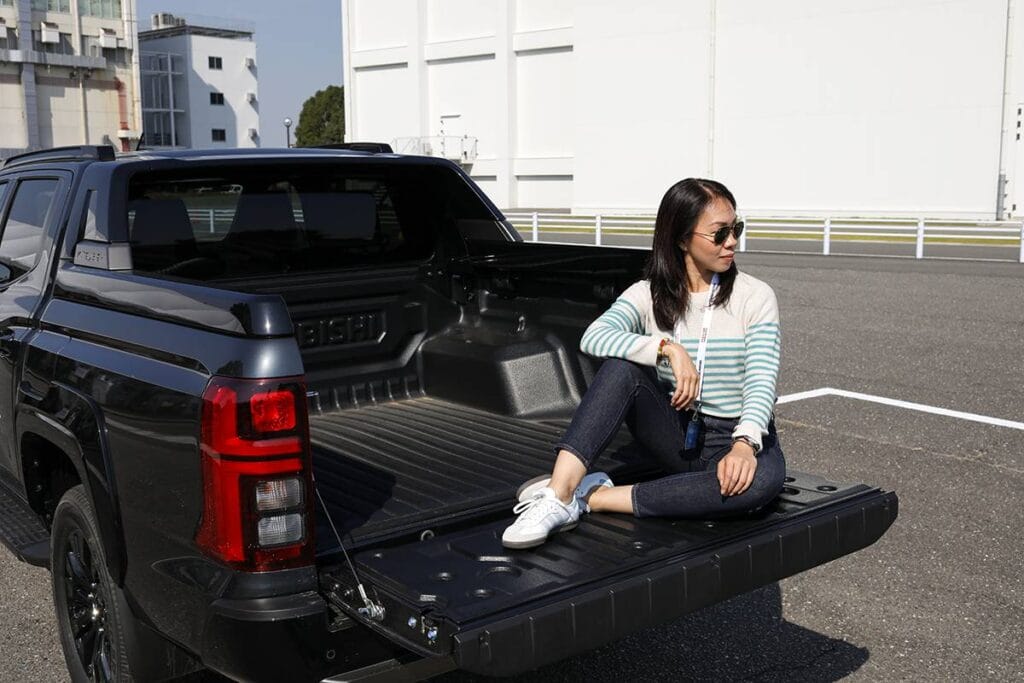I drove a pick-up truck through unfamiliar territory and I was impressed.
As a petite woman, any kind of vehicle bigger than a large SUV would intimidate me. It doesn’t matter that it would allow me to see most of the road. There would simply be too much vehicle and not enough me to go around – and that can be all sorts of overwhelming. It was no different when we were told that the car that we would be putting to the test at the Mitsubishi Motors Okazaki Plant was the all-new Mitsubishi Triton.
God forbid that I would admit how nervous I was. Nevermind that we were in the beautiful, scenic outskirts of Nagoya, Japan. Not only were we driving trucks that I needed both hands to climb into, it was also a Japan-spec model (read: right-hand drive) and we were taking it through specific road conditions that were designed to push the limits of this vehicle.

You had to hand it to Mitsubishi. In true meticulous Japanese fashion, the test drive program was as extensive and detail-oriented as you would expect and unlike any that we have experienced here in the Philippines. In order to challenge the capabilities of the all-new Mitsubishi Triton, there were three parts that were laid out during the half-day affair.
The first route was what I would call, “the starter pack.” In a convoy of three Tritons, we were taken through a dirt-road path that was designed to be a combination of flat ground and slightly uneven terrain. Coincidentally tailored to our local experience, the path accurately resembled the feel of driving through Philippine streets. We went over unexpected roadblocks, both shallow and deep potholes, unevenness that was not supposed to be there, sudden turns, and general unsatisfactory road conditionS.

The second level put us in the passenger seat as Mitsubishi engineers drove each of us through an off-road trail, created to demonstrate the ability of the Triton to take on some of the most challenging terrain in Asia. This was in a bid to show how the Triton can be the next big thing for the growing 4×4 market here in the Philippines, not only in terms of what you do to set it up as a rig, but largely in terms of its superior performance and off-road suspension.
Lastly, we were treated to on-track driving to showcase the Triton’s performance through a banked inclined turn. This portion of the program gave us a chance to test the maneuvering capability of the truck and how it responds to speed, cornering, and controlled handling. An additional demonstration was a 45-degree inclined ramp that tested how the Triton can maintain stability while in a hanging position.

Through each of the trails, the all-new Triton proved how worthy it is to be the next big thing in pick-up trucks. According to Mitsubishi, the Triton is engineered primarily to be functional, with a longer wheelbase than its predecessor that slightly favors the front-end chassis. Running on a new 2.4-liter clean diesel engine mated to a 6-speed automatic transmission, it features a redesigned suspension upgrade, using a lightweight leaf springs has a longer suspension rebound. This dramatically improved the level of riding comfort, especially when tested through bumpy conditions, which is the common scenario for the Philippines — on or off road.
The new generation Triton is also packed with driving tech that allows you to customize the driving modes, according to your needs. Mitsubishi’s Super Select 4WD-II has 4 modes (2H rear-wheel, 4H full-time 4WD, 4HLc locked center differential, and 4LLc locked center differential on lower gears) and seven — yes, seven — selectable drive modes. Normally, Philippine-spec vehicles would come with at least 3 modes: Normal, Sport, and Eco. The Triton has included Gravel, Snow, Mud, Sand, and Rock — all available in 4WD mode.

These customizable features allow the Triton to adjust smoothly to the driving conditions that the truck is entering into. This was demonstrated thoroughly when we were taken through the off-road trail, where the Triton was required to climb through man-made sand dunes and gravel hills that mimicked actual desert conditions.
The key feature that stood out, however, was the presence of the Active Yaw Control, which is a type of brake control that improved the response of the truck when cornering and approaching sudden turns. The Mitsubishi test drive trail was entirely unfamiliar to us and there was little time to anticipate the next roadblock. Add to that, the longer, heavier structures of trucks usually mean that there is a wider turning radius that can become uncontrollable at unexpected corners.
With the Active Yaw Control, the truck instantly adjusted to these conditions, where it even felt like it was slightly pulling back and applying extra brake force to maintain stability and grip. Coupled with steady handling and maneuverability, it felt incredibly controlled, regardless of the environment. The most impressive was how stable and smooth the truck was, even on a banked turning track at speed and when stopped at a 45-degree hang.
The all-new Mitsubishi Triton is one impressive pick-up truck that the Philippines should look forward to. From a first drive perspective, it goes beyond the usual truck performance, incorporating the kind of driver and rider comfort and styling that is developed for SUVs and passenger cars. Engineered for the real world, expect the extraordinary when the Triton officially becomes available this coming January 2024.

